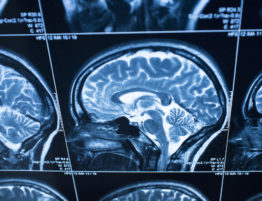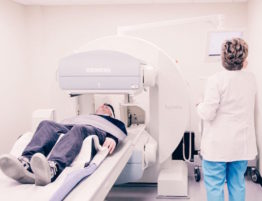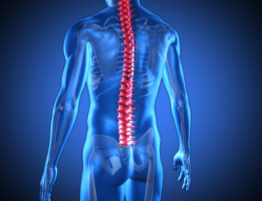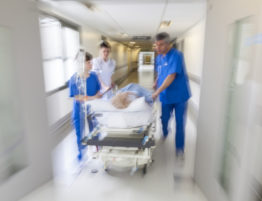Traumatic Brain Injury Accident Lawyers• Personal Injury Trial Lawyers, Los Angeles County
Our personal injury trial lawyers represent accident victims who have suffered a traumatic brain injury throughout Southern California, including Los Angeles County and the Counties of San Diego, Santa Barbara, San Bernardino, Ventura, Riverside, and Orange County.
A permanent brain injury may be difficult to recognize or prove. Changes in a person’s behavior or personality may be subtle. In any case, the earlier a brain injury is diagnosed, the earlier a person can begin a treatment program. If you or a loved one has suffered a brain injury, our experienced trial lawyers for accident victims can explain your legal options and how you may be able to obtain compensation from the parties at fault.
A brain injury can be devastating for both the person injured and his or her family. Therapy, medical treatment and supplies can be exceedingly expensive. A legal claim can help you secure financial assistance from the party responsible for the injury. If you or a loved one has suffered a brain injury, contact the brain injury lawyers from Stolpmann, Krissman, Elber & Silver, LLP, can evaluate your situation and prepare a claim for your medical expenses.
Brain Injury Symptoms
Symptoms of brain damage can vary in type and severity. The effects largely depend on the degree of injury and the portion of the brain affected. In general, anyone who has sustained a serious blow to the head should see a doctor to determine if they should undergo diagnostic analysis.
Common symptoms of traumatic brain injury include bleeding from the head or face, loss of consciousness, confusion, lethargy, lowered pulse or breathing rate and clear fluid drainage from nose or ear.
Symptoms of concussion include loss of consciousness, memory loss, vomiting, dizziness, partial paralysis or numbness, shock, confusion and anxiety.
Diagnostic Tools
There are a variety of physical, mental and psychological tests that medical professionals use to determine the severity and effects of a brain injury. However, it is important to note that many diagnostic tests fail to detect brain injuries where there is a closed head injury. The following is a brief description of some diagnostic tools.
MRI — Magnetic Resonance Imaging (MRI) is a noninvasive process that uses magnets to create nondestructive, three-dimensional, internal images of the soft tissues of the body. It is often used to analyze the brain, spinal cord and muscle.
CT Scan — A computed tomography (CT) scan is a computer-assisted x-ray procedure that produces cross-sectional images of body tissue. This procedure is usually noninvasive and brief in duration.
PET Scan — Position Emission Tomography scanning (PET scan) is a computerized diagnostic tool that uses a small amount of a radioactive tracer to create a view of a “slice” of a scanned object. This type of diagnostic tool is helpful for brain injury patients because it produces a three-dimensional image of the brain that shows how and where the brain is functioning.
EEG — Electroencephalography (EEG) is the graphic recording of electric waves created in the brain. It is recorded through surface electrodes that are placed on the scalp. The EEG measures wave patterns and can help diagnose certain brain conditions.
Lab Work — Individuals with head injuries may have the following laboratory tests: complete blood count, glucose, electrolyte, arterial blood gas, toxicology tests, prothrombin and partial thromboplastin times, platelet determinations and DIC panel.
Functional Tests for Brain Damage
In addition to the above mentioned procedures, medical and psychological professionals use functional tests that analyze:
- Vision and eye movement
- Facial expression and reactions to stimuli
- Hearing
- Muscular movement
- Personality
- Memory
Treatment and Therapy
Treatment and therapy will greatly depend on the extent and nature of the injury. If an individual suffered a penetrating injury, surgery may be necessary. In addition, surgery may be necessary to drain blood if there is bleeding inside the skull. Some individuals with brain injuries may require physical and occupational rehabilitation to condition muscles and relearn life skills. Treatment programs may include behavioral and cognitive assessments and checks of whether medications that have been prescribed are still appropriate. Generally, the earlier treatment begins the better the outcome. However, in some cases, the injured person may not ever make a full functional recovery, though his or her impairments may improve over time.
What to do if you suffered a Traumatic Brain Injury in an Accident
If you or a loved one was in an accident and suffered a brain injury, it is important to seek medical attention. Because many brain injuries go undiagnosed, it is essential that you have a variety of tests and that a doctor carefully examine your symptoms. After seeking medical attention, talk to a personal injury lawyer who has experience handling brain injury cases. An attorney at Stolpmann, Krissman, Elber, and Silver, LLP, can evaluate your situation, and walk you through all the steps in litigation and explain your chances of recovery.
Brain injury cases can be complex and difficult because of several factors. Defendants and insurance companies may not believe that the plaintiff has actually suffered a brain injury because many diagnostic tests fail to detect the injury. In addition, many individuals who suffer from a brain injury have memory loss and may not be able to remember the specifics of the accident that caused their injury. While these factors may make proving the brain injury more difficult, they do not necessarily preclude recovery for your injuries.
If you or a loved one has sustained a brain injury, you can discuss your situation for free with one of our expert brain injury lawyers. Contact us for a free consultation today.





